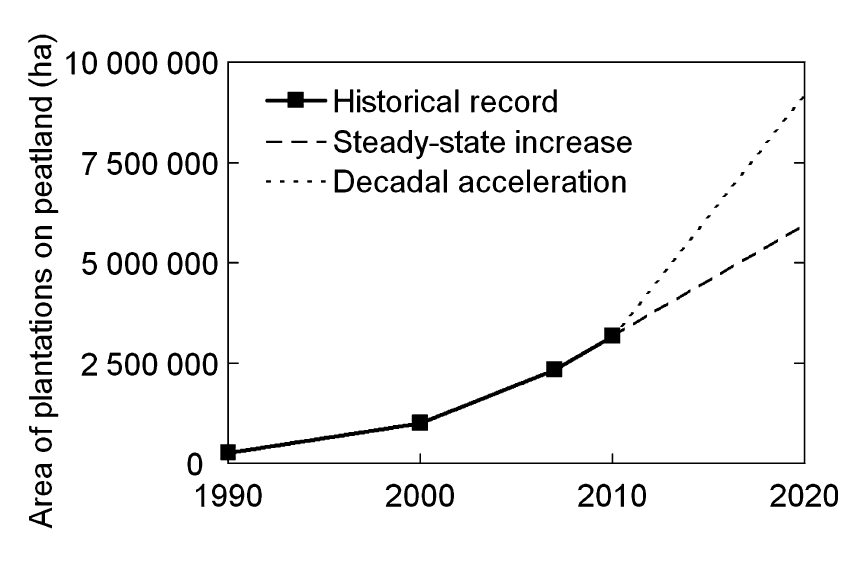Blog
GCB Bioenergy paper: Extent of industrial plantations on Southeast Asian peatlands in 2010 with analysis of historical expansion and future projections
Indonesia and Malaysia are the two dominant suppliers of palm oil. Palm oil, the world’s most productive vegetable oil crop (in terms of production of oil per hectare), has been referred to as the world’s ‘marginal’ vegetable oil. It is argued that because palm oil is the cheapest vegetable oil in the world, cheaper than olive oil or rapeseed/canola oil or sunflower oil or soy oil etc., when overall demand for vegetable oil increases we expect to see palm oil production respond.
This is important for any environmental assessment of biofuel policies, because it implies that even if the European or American market uses locally produced oils (such as rapeseed and soy) to produce biodiesel, then the increase in global production to accommodate that will not be only an increase in rapeseed/soy production in Europe/America, and might not even be primarily an increase in rapeseed/soy production in Europe/America, but will be an increase in palm oil production in Southeast Asia. It then becomes necessary to consider not only the environmental footprint of rapeseed or soy cultivation, but to consider the environmental footprint of palm oil. This is reflected in analyses of indirect land use change (iLUC) such as the MIRAGE modelling by Laborde (2011) for the European Commission.

A key question in determining the carbon consequences of this expansion of oil palm plantations is whether and to what extent palm oil expansion is likely to occur on peat soils, requiring drainage which results in the decomposition of the peat, and massive carbon dioxide emissions (c.f. our review on this issue from 2011). The new study in Global Change Biology: Bioenergy aims to answer this question by undertaking a historical analysis of the rate of expansion of palm plantations onto peat soils using satellite mapping techniques. The study (which presents in the academic literature the analysis presented in our earlier white paper) shows that in Indonesia and Malaysia, including provinces across Peninsular Malaysia, Borneo and Kalimantan, there has been a steady acceleration in the rate of peat destruction for palm plantations since 1990. The fastest increase in palm area on peat is observed in the most recent period studied, from 2007 to 2010. The study concludes that “it would appear that very little peatland forest is likely to remain in Southeast Asia by the end of the current decade unless land use planning policies are changed or markets for palm oil and pulp products from these areas are reduced.”
The study is now available online at: http://onlinelibrary.wiley.com/doi/10.1111/j.1757-1707.2012.01172.x/abstract
